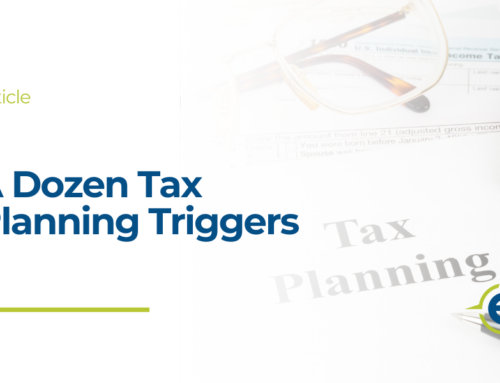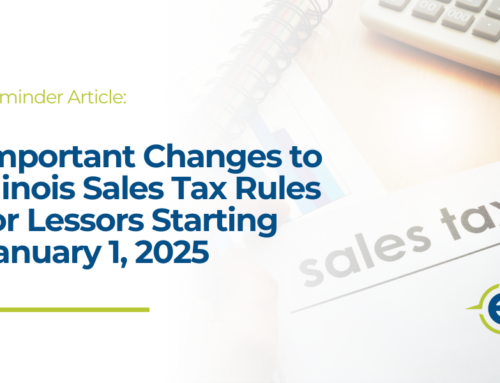Retailers’ Occupation Tax Guidance for Out-of-State and Illinois Retailers
Many changes go into effect with the new year. Effective January 1, 2025, retailers who were previously required to collect and remit Illinois Use Tax (UT) on retail sales sourced outside of Illinois and made to Illinois customers are now subject to destination-based retailers’ occupation tax (ROT).
Who does this affect?
This requirement impacts retailers with a physical presence in Illinois and makes sales that are sourced outside of Illinois to customers within Illinois. For complete details, see 35 ILCS 120/1, 120/2, 120/2-12, and Public Act 103-983.
What is destination-based retailers’ occupation tax (ROT)?
Destination-based retailers’ occupation tax (ROT) refers to the total State and local ROT rate applied to a sale, based on the rate effective at the Illinois location where the item (tangible personal property) is shipped or delivered or where the purchaser takes possession of the item. For complete information on determining where a retail sale is sourced, see 86 Ill. Adm. Code 270.115.
Will this change impact my registration?
Yes, it does affect your registration. For destination-based sales, retailers must register a tax site for each jurisdiction (such as a city or county) where they have made or plan to make sales.
- Out-of-state retailers: If applicable, the IDOR will update your registration status from UT to ROT. After December 23, 2024, you will be responsible for adding new tax sites to your account.
- Illinois retailers: If you are already registered to remit ROT, your registration status will remain unchanged. However, you are responsible for registering new tax sites for any sales sourced outside of Illinois to your account.
If you are a retailer described above and all your sales are made through a marketplace facilitator that meets the tax remittance threshold (refer to 86 Ill. Adm. Code 131.135), you may close your Sales Tax account with IDOR. Marketplace facilitators must ensure that they collect and remit the appropriate ROT on behalf of the retailers identified above. To confirm this, the marketplace facilitator will provide Form CRT-63, Sales Through Marketplace Facilitator Certificate, which is available on tax.illinois.gov. This certificate verifies that the facilitator will collect and remit the taxes indicated on the certificate to IDOR for sales made through its marketplace.
What do I need to do?
If you have confirmed that this change impacts you, starting January 1, 2025, you must:
- Verify the correct State and local tax amounts to remit based on the location to which the tangible personal property is shipped or delivered or where the purchaser takes possession.
- Register any new or updated location tax sites to their account before submitting the January 2025 return (due February 20, 2025) or the return for the period when the sale occurred.
- Report destination-based sales on Form ST-1, Sales and Use Tax, and E911 Surcharge Return, on Lines 4a and 5a.
- Complete Form ST-2, Multiple Site Form, to report destination-based sales by each updated location tax site.
Failure to correctly report the proper taxing location may lead to the misallocation of revenue to the appropriate local governments. Retailers who incorrectly report taxing locations may be charged additional taxes at the correct rate, along with late payment penalties and interest.
How do I add tax sites?
Visit MyTax Illinois to add or remove sites using the Maintain Locations link in your Sales and Use Tax (ST-1) account. Use the “Changing Location” tab to register all new sites before filing the return, which includes sales made to that location. If you need assistance adding locations, you can contact the IDOR by calling 217-785-3707 or rev.crd@illinois.gov.
Where can I confirm the correct tax rate that I should be charging?
MyTax Illinois has a “Search by Address” function Tax Rate Finder in MyTax Illinois that allows you to search sales tax rates based on the destination or if you need a machine-readable tax rate file, you can visit the address-specific page.
Will this change how I complete Form ST-1?
Sales previously reported on Lines 6a and 7a of Form ST-1 will now be reported on Lines 4a and 5a. Moving forward, you must monitor your sales to identify any new taxing locations that need to be added to your account before submitting the return for the reporting period. You must also report all sales for those tax sites on Forms ST-2.
You should continue to file Form ST-1 on the schedule directed by IDOR. You are also required to file your return by the due date, even if you have no gross receipts for the reporting period. IDOR reviews accounts annually and will notify you if your filing status changes.
Below are additional resources from the Illinois Department of Revenue. As always, our team is here to help if you have any questions about your situation.







